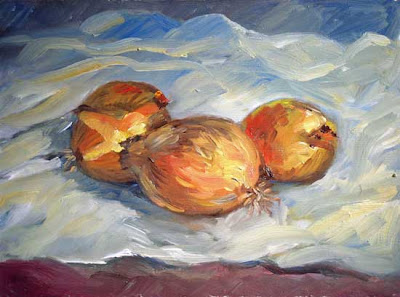
Three onions - oil on panel (6"x8") by Benoit Philippe

Three onions - oil on panel (6"x8") by Benoit Philippe


Sometimes, it seems that we are running out of ideas, repeating ourselves, and we need something fresh and different – a new idea. The book Ideaspotting: How to Find Your Next Great Idea by Sam Harrison is all about this.
The author coined the title of his book on the word “trainspotting” (which describe the activities of train fanatics who try to sight as many different trains as possible and keep lists of them).

My copy of the book with multiple bookmarks for pages I want to go back to
The book is a quick read, well designed with an elegant typography and sepia illustrations. Points made are illustrated by real world stories on how entrepreneurs turned around their businesses after spotting ideas. There are also inspiring quotes along the way.
It is the sort of book you can pick and dip into at random. The book alternates explanations and practical exercises with flow charts, checklists and questionnaires. It starts your journey by exploring your current world and then expands to the outside, teaching you how to use all your senses to get new ideas. There are also parts on networking and listening and how to get ideas from others.
Although it has been written with the designer or marketing person in mind, the techniques described will serve well any artist or creative person and will also help you on the business side of your practice.
Here are 3 things I really liked in this book:
The activities you will find in this book and the ideas you should generate by trying some of the techniques explained will keep you busy for a long time.
Related articles and resources
Ideaspotting: How to Find Your Next Great Idea
Paperback: 256 pages
Publisher: How Design Books (28 Jul 2006)
Language English
ISBN-10: 1581808003
ISBN-13: 978-1581808001
Product Dimensions: 18.3 x 13.2 x 2 cm
Sam Harrison’s web site Zingzone




